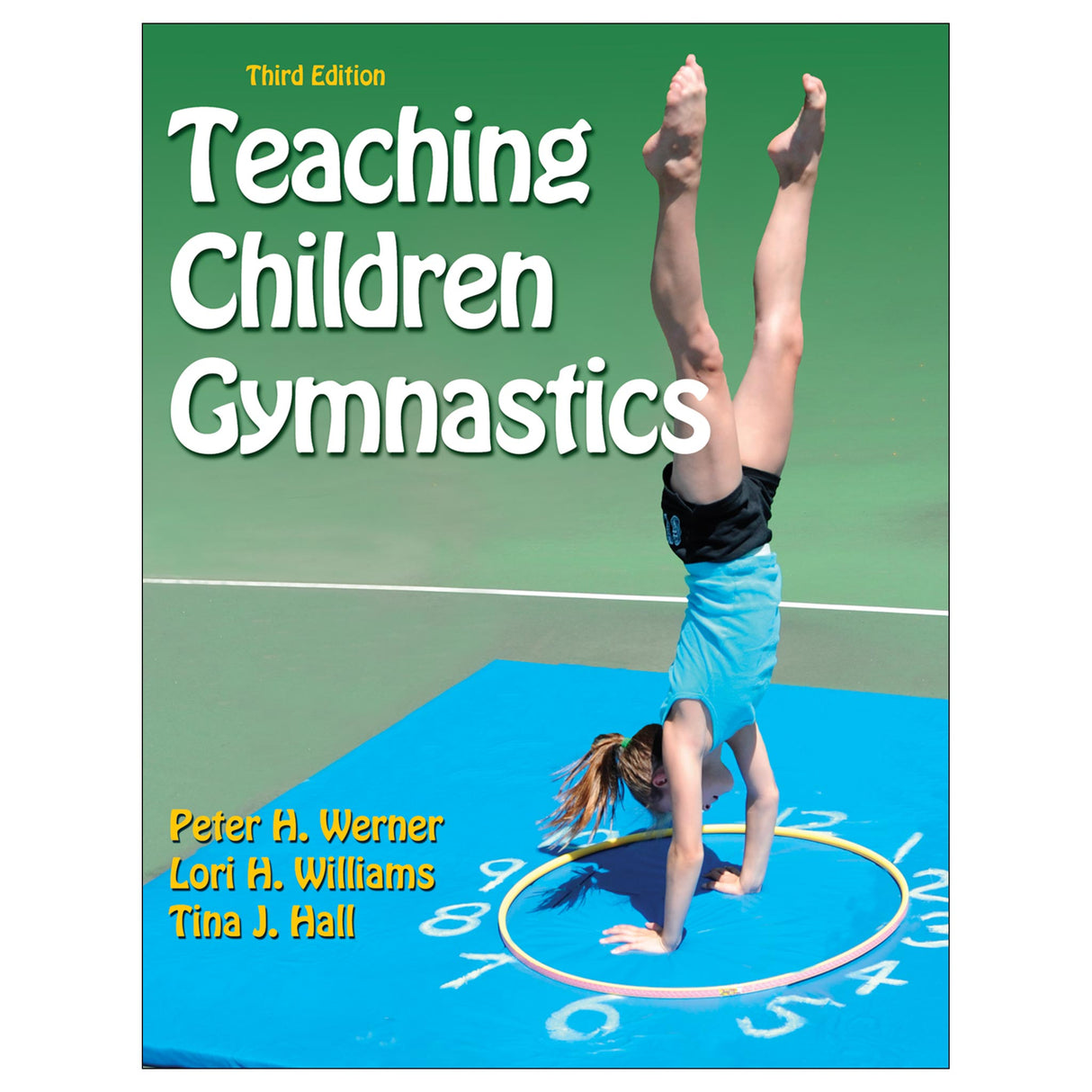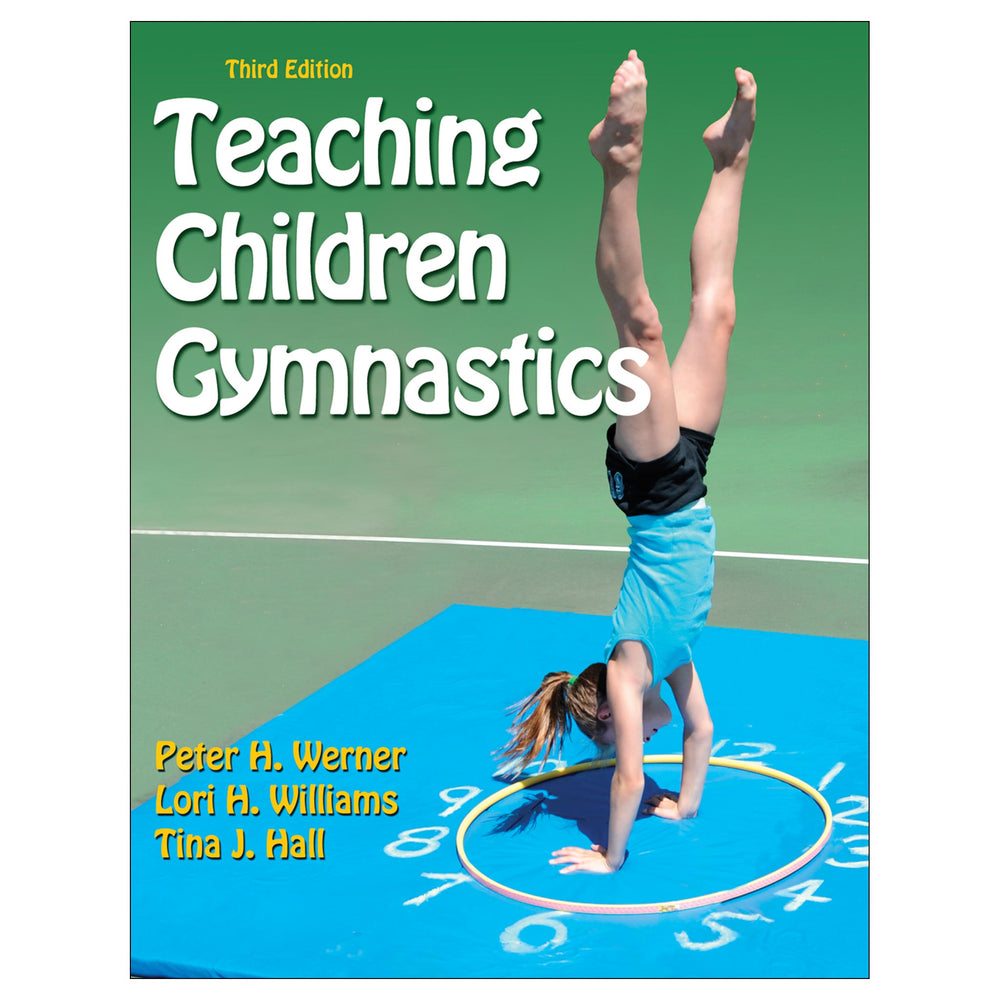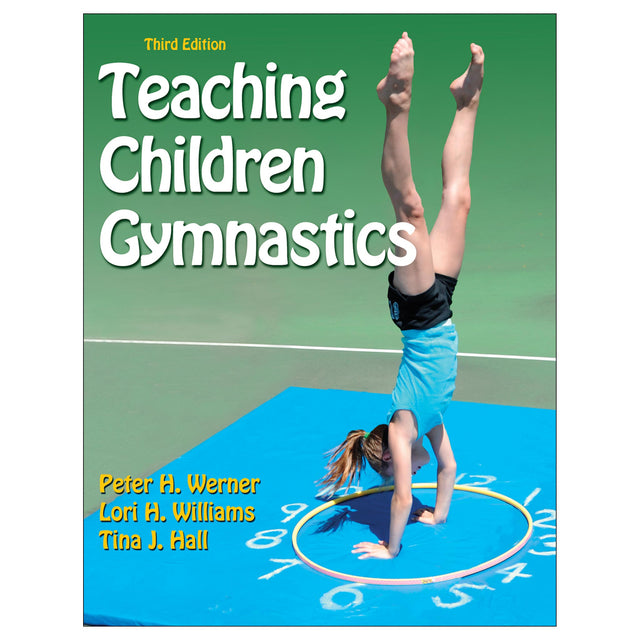Teaching Children Gymnastics-3rd Edition
$19.00 CAD
This third edition of Teaching Children Gymnastics will help you tailor a gymnastics program to your teaching situation while combining the best facets of developmental skills, health-related fitness, and conceptual learning based on process characteristics of body, space, effort, and relationships. Internationally renowned author and educator Peter Werner and coauthors Lori Williams and Tina Hall guide you through the process of teaching gymnastics skills and then linking those skills into sequences.
Having conducted workshops at all levels, the three authors combine decades’ worth of gymnastics knowledge and teaching experience. In this book, they offer updated and new material, including
• a chapter on designing gymnastics sequences;
• sections on behavior management, inclusion, and advocacy;
• information on scope and sequence for grades K to 5;
• information based on revised national standards, assessment, and designing of gymnastics sequences; and
• additional learning experiences, plus ideas for creating more learning experiences.
You will find real-life scenarios that will help you apply the material, and you will learn how to create a positive learning environment for your students. Chapter objectives, summaries, and reflection questions enhance the learning experience.
Part I of Teaching Children Gymnastics provides an overview of developmentally appropriate gymnastics, exploring why it should be part of a high-quality elementary physical education program and how the instructional approach used in the book differs from the traditional approach used in physical education. The material in part I will help you plan your program, incorporate it into your curriculum, and assess your students.
Part II provides great learning experiences for the skill themes of traveling, statics, and rotation. Each skill theme is broken into categories that help children acquire the skills they need to learn. It’s in this portion that they develop sequences that integrate all the skills they have learned. The authors also supply an appendix with forms and handouts, cutting down your preparation time.
Teaching Children Gymnastics is a great tool for novice and experienced teachers alike. More than that, it’s the perfect resource for opening up the fun and exciting world of gymnastics to youngsters who are always looking for an excuse to perform just the types of skills that they will learn—and design sequences for—through this book.
Audience
Text for students learning to teach gymnastics. Reference for K-5 physical educators and for community gymnastics instructors.
Part I Developmentally Appropriate Gymnastics
Chapter 1 Why Is It Important to Teach Children Gymnastics?
Defining Developmentally Appropriate Gymnastics
Brief History of Gymnastics
Gymnastics Today
National Standards for Physical Education
How Gymnastics Should Be Taught
Where Are We Now?
A Look to the Future
Summary
Questions for Reflection
Chapter 2 Tailoring Gymnastics to Fit Your Teaching Situation
Planning
Developing a Positive Learning Environment
Summary
Questions for Reflection
Chapter 3 Incorporating Gymnastics Into Your Program
Scope and Sequence
Stages of Gymnastics
Task Development in Gymnastics
Direct and Indirect Teaching Styles
When to Encourage Student Demonstrations
Accountability: The Gymnastics Work Ethic
Stressing Good Body Mechanics and Aesthetics
Skill Themes for Gymnastics
Process Variables
Learning Experiences
What Makes a Learning Experience Developmentally Appropriate?
Summary
Questions for Reflection
Chapter 4 Assessing Children’s Progress in Gymnastics
New Ways to Assess
What to Assess
How to Assess
Psychomotor Assessment
Cognitive Assessment
Affective Assessment
Reporting What Has Been Assessed
Summary
Questions for Reflection
Part II Teaching Developmentally Appropriate Learning Experiences in Gymnastics
Chapter 5 Learning Experiences for Traveling
Mini-Index
And Away We Go
Landing Pad
Traveling Transformers
Bunny Hop
Ready for Takeoff
Rock and Roll
Fantasy Flight
Cross at the Intersection
Clock Face
Beam Me Up
Me and My Shadow
Additional Ideas for Learning Experiences
Chapter 6 Learning Experiences for Statics
Mini-Index
Patches and Points
Push and Pull
Same, Different
Shoulder Stand
Copycat
Dimensions
Statues
Bottoms Up
Twins
See What I Can Do
Lean on Me
Additional Ideas for Learning Experiences
Chapter 7 Learning Experiences for Rotation
Mini-Index
Balls, Eggs, and Pencils
You’ve Got It All Backward
Sit-Spins
Roll, Roll, Roll Your Body
Taking a Spin
The String Challenge
A Roll by Any Other Name . . .
Let’s Make a Connection
Hip Circles
Partner Task Cards
Feet, Hands, Feet
Additional Ideas for Learning Experiences
Chapter 8 Designing Gymnastics Sequences
What Makes a Good Gymnastics Sequence
Sample Gymnastics Sequences





